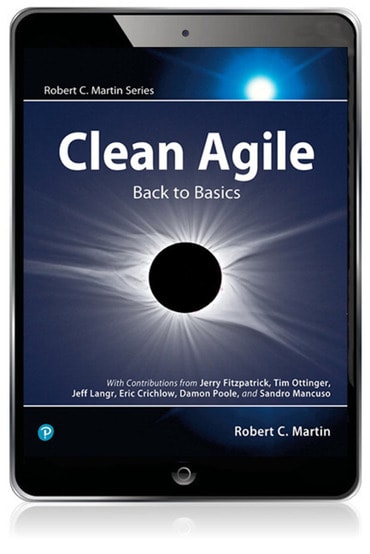Switch content of the page by the Role togglethe content would be changed according to the role

Clean Agile: Back to Basics, 1st edition
Published by Pearson (September 12, 2019) © 2020
- Robert C. Martin
$36.99
- Available for purchase from all major ebook resellers, including InformIT.com
$36.99
- Available for purchase from all major ebook resellers, including InformIT.com
Title overview
Twenty years after the Agile Manifesto was first presented, the legendary Robert C. Martin (Uncle Bob) reintroduces agile values and principles for a new generation of software developers. In this eagerly awaited book, the best-selling author of The Clean Coder shows how to bring unprecedented levels of professionalism and discipline to agile development — and thereby write far more effective, successful software.
As with his other books, Martin's Clean Agile: Back to Basics doesn't merely present multiple choices and options, and say "use your best judgment"; it tells you what choices to make and why those choices are critical to your success. Writing in the agile context, Martin offers direct, no-nonsense answers to crucial questions:
- How and why did agile begin?
- What are the costs and benefits of agile?
- What are the most effective practices of agile development?
- How should an agile team be organized?
- What roles do programmers, testers, and managers play in an agile team?
- What is the role of the Agile Coach?
- What about agile for large projects?
- What kinds of projects benefit from agile?
Clean Agile: Back to Basics is essential reading for students, programmers, managers, testers, project managers, and every software professional called upon to lead or participate in an agile project.
